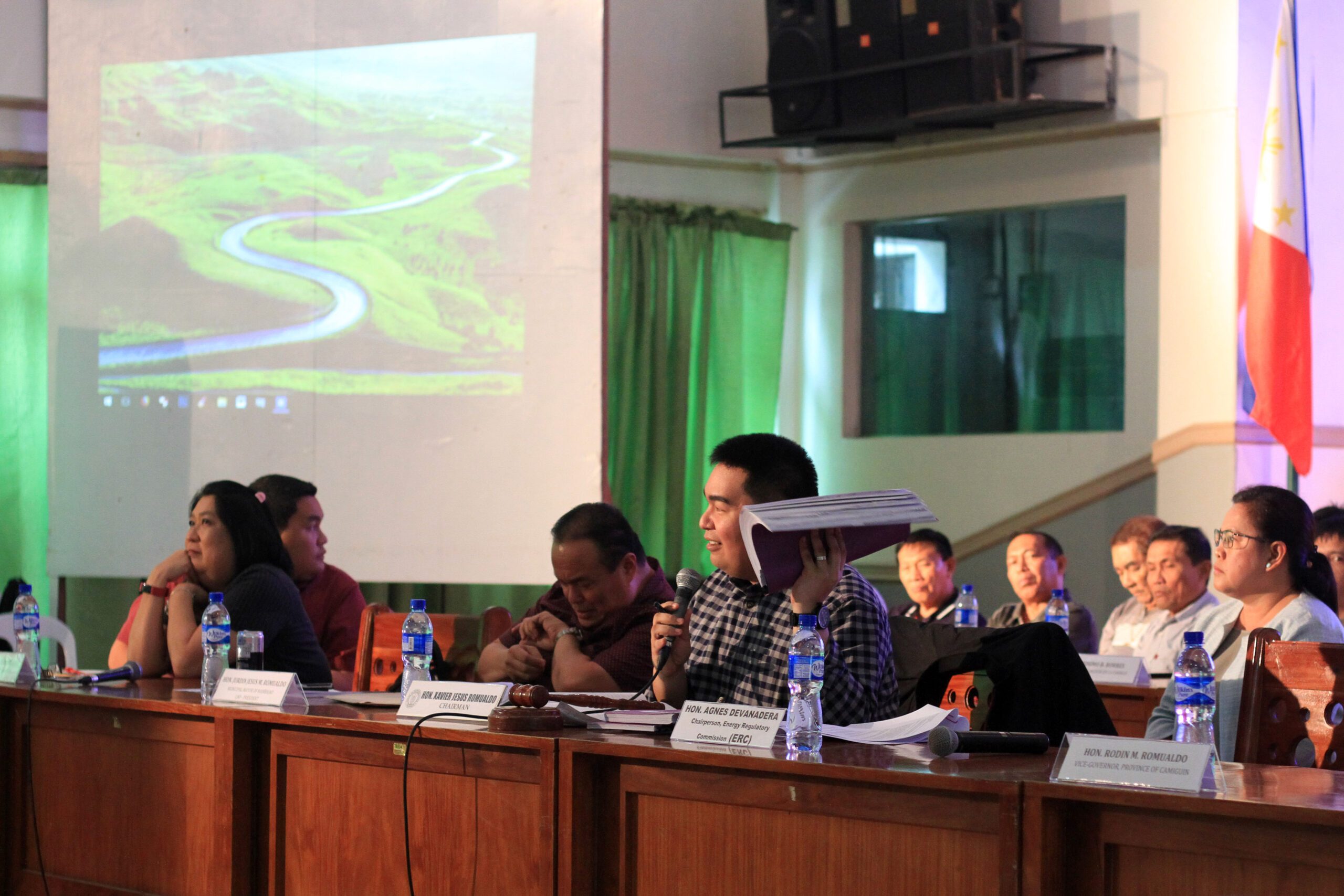SUMMARY
This is AI generated summarization, which may have errors. For context, always refer to the full article.

CAMIGUIN, Philippines – The financial problems of Camiguin Electric Cooperative, Incorporated (Camelco), if left unresolved, may plunge the island province into darkness, a congressman warned.
Camiguin Representative Xavier Jesus “XJ” Romualdo, chairman of the House committee on good government and public accountability made the warning at a congressional hearing on the financial viability of Camelco at the the convention center here on Tuesday, March 19.
The hearing was attended by representatives of Camelco,theta National Electrification Administration (NEA), he Energy Regulatory Commission (ERC), the Department of Trade and Industry, and hundreds of stakeholders.
Camelco is under NEA, which supervises and monitors its operation.
Camelco finance manager Joanne Lapeciros said before the House panel that Camelco had incurred losses of more than P426 million as of December 2017, and that she monitored that it had been operating at a loss since 2007.
Lapeciros said that with the current financial status of Camelco, it would be unable to pay its power suppliers.
Romualdo said that the financial losses pointed to neglect in the management of Camelco.
He expressed fear that if Camelco cannot pay its obligations to its power suppliers, the island may end up without electricity and hurt its progress.
System loss
Engineer Glenn Jose Redera, Camelco technical services manager, said Camelco’s power system loss is at 16.21% with the highest recorded at 17.19% – higher than ERC’s system loss cap of 12%.
System loss is the amount of power contracted vis-a-vis power consumed by customers.
In explaining Camelco’s system loss, Redera said the island province relies on power supplied through a submarine cable connected to a substation in Kinoguitan town, Misamis Oriental, which is “not ideal” and “incurs line loss.”
When the island’s submarine cable was first laid down some 40 years ago, the island’s power need was just 300 kilowatts (kW). Today, this requirement has grown to 4.7 megawatts (MW).
High power rates
During the inquiry, lawmakers found out that Camelco’s obligations to power suppliers stood at P76.5 million. In 2018 alone, it owed its power generators P47 million.
Camelco has Power Supply Agreements (PSAs) with FDC Misamis Power (4MW), King Energy Generation (2MW), Incorporated (KEGI), and GN Power (1MW), which has yet to go onstream.
The PSAs were signed within 4 months of each other.
KEGI, a diesel power plant, is supposed to be Camelco’s peak power supplier but on March 16, when the National Grid Corporation of the Philippines (NGCP) implemented a manual load drop or rotational blackout in Camiguin, Misamis Oriental, and some part of Bukidnon, KEGI did not supply power to Camelco, leaving Camiguin without power for 3 hours.
Romualdo said this was “questionable.”
“They were not able to go online and supply power,” he said. “The problem with this PSA is that it is over-contracted and we (consumers) are paying for this.’
Camelco customers pay P16.45 per kilowatt hour (kWh), one of the highest rates in Mindanao.
Romualdo said he feared that once GN Power goes onstream, Camelco customers may pay as much as P21/kWh.
Proposed solution
Congressman Romualdo said that to solve Camelco’s financial problem, the coop should pull out its embedded capacity in KEGI.
Camelco pays KEGI P6 million per month under a 10-year contract.
Camelco’s current contracted power supply is 10.73MW, but it is only using 4.7MW. The excess supply is shouldered by its customers.
Romualdo suggested said that by canceling the contract, the people of Camiguin would enjoy lower power cost while Camelco can focus on paying its power supplier.
Zita Abellare, Senior Trade Industry Specialist of the Department of Trade and Industry-Camiguin, said high power cost would drive away potential investors.
“Power cost greatly affects operations,” Abellare said.
Probe
During the hearing, Mambajao Mayor Jurdin Jesus Romualdo said that Camelco had been kept afloat “through subsidies and loans from NEA.”
“That is no way to operate. Camelco’s multiple loans are gaining interests and they are not able to pay it, someone has to be held accountable,” the mayor said.
NEA engineer Legardo Galang Jr said NEA would look into the issues raised and investigate if there was anyone liable for gross mismanagement in Camelco.
Mayor Romualdo said that when he was Camiguin congressman in 1998, he had pushed for the condonation of Camelco’s loan for the submarine cable because the coop could not pay for it.
“I thought that that’s going to be okay now since they don’t have to pay for the cable, but this is gross mismanagement,” Mayor Romualdo said.
He also questioned NEA’s “Triple A” rating for Camelco given its debts.
“Had NEA even bother to come down, go out of their comfort zones to bother to see and check the real figure?” Mayor Romualdo asked. – Rappler.com
Add a comment
How does this make you feel?





There are no comments yet. Add your comment to start the conversation.